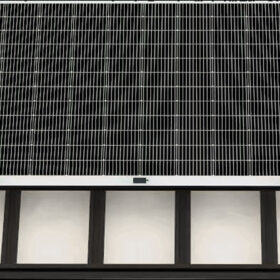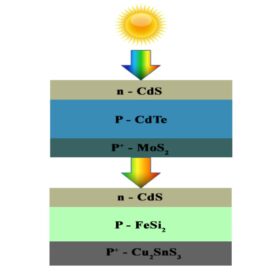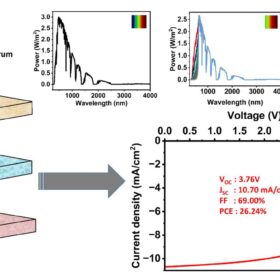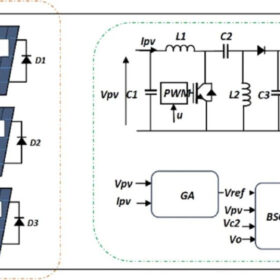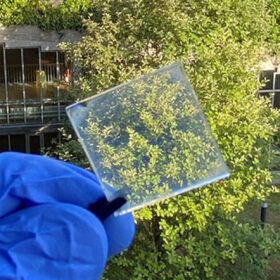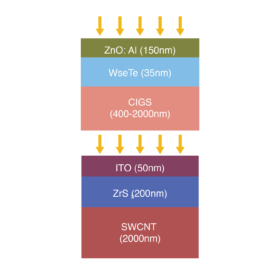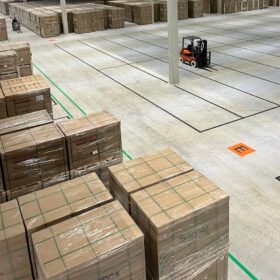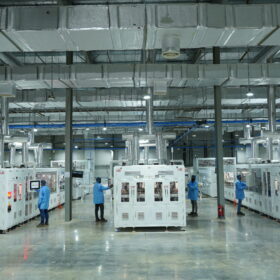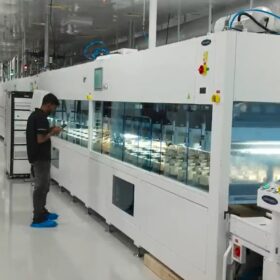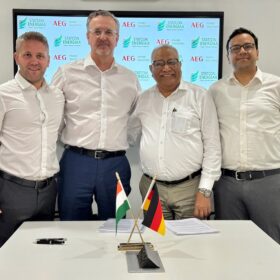Sunman unveils 520 W glass-free solar panel with 19.3% efficiency
The new panel has a white backsheet and a temperature coefficient of -0.34/C. It weighs 4.1 kg per m2 and, according to the manufacturer, supports all types of installation methods, including roof adhesive and removal mechanical mounting.
IRENA says world needs 1.1 TW of renewables per year
The International Renewable Energy Agency (IRENA) released a new report on the sidelines of the Berlin Energy Transition Dialogue this week describing the actions needed so the world complies with targets set at the recent COP29 conference in the United Arab Emirates. IRENA President Francesco La Camera says renewables are the only energy sources with the speed and scale to achieve the ambitious targets set in Dubai.
How to convert PV plants with dual-axis trackers into agrivoltaic facilities
A Spanish group of researchers has investigated how much agricultural production may be hosted by existing ground-mounted PV plants using dual-axis trackers. They outlined a new methodology that reportedly enables to quantify how much space around and beneath the panels can be uses for agricultural purposes.
Tandem solar cell based on cadmium telluride, iron disilicide promises 43.9% efficiency
Researchers in Bangladesh have designed a dual-junction tandem solar cell with a bottom device based on iron disilicide (FeSi2), an emerging absorber material know for its high thermal stability and good optoelectronic properties. Their simulation showed the advantage of combining the larger bandgap of the top cadmium telluride cell and the smaller bandgap of the bottom FeSi2 cell.
Indian scientists design 26.24%-efficient triple-junction all perovskite solar cell
The researchers simulated an all perovskite solar cell offering the advantage of effectively harnessing sunlight across a wide range of wavelengths. The device has the potential to achieve an open-circuit voltage of 3.76 V, a short-circuit density of 10.70 mA/cm², and a fill factor of 69.00%.
New approach to improve MPPT in partially shaded PV systems operating at high temperatures
The novel methodology is reportedly able to track global maximum power point and reduce power losses in partially shaded PV systems by up to 33%. It uses a backstepping controller (BSC) algorithm to adjust the pulse width modulation signal and a genetic algorithm to compute the BSC gains to achieve an optimal PV system outcome.
REC launches 430 W heterojunction solar module with 22.2% efficiency
REC has developed a new series of residential heterojunction solar panels with efficiencies ranging from 20.6% to 22.2% and an operating temperature coefficient of -0.24% per degree Celsius.
Single-junction transparent perovskite solar cell achieves record-breaking voltage of 1.78 V
A research team in Germany claims to have achieved the highest open-circuit voltage ever recorded to date for a perovskite solar cell based on hybrid methylamine lead chloride (MAPbCl3). The novel perovskite absorber was fabricated with a two-step deposition method and annealing under molecular nitrogen (N2) gas inside a glovebox.
First attempt to design CIGS/SWCNT tandem solar cells promises 38.91% efficiency
Indian researchers have proposed to build tandem solar cells based on a CIGS top cell and a bottom cell relying on a single-walled carbon nanotube (SWCNT) absorber. SWCNTs were previously used in solar research as an alternative to conventional metal grid contacts or hole transport layers (HTLs), as they combine optoelectronic properties, flexibility, chemical stability, and simple transfer protocols.
PV modules now selling in Europe for €0.10/W to €0.115/W
Solar module prices could slightly increase as European warehouses reduce their panel stockpiles, says Leen van Bellen, business development manager Europe for Search4Solar, a Dutch purchasing platform for solar products. He tells pv magazine that TOPCon modules will soon overtake traditional PERC products in Europe.

